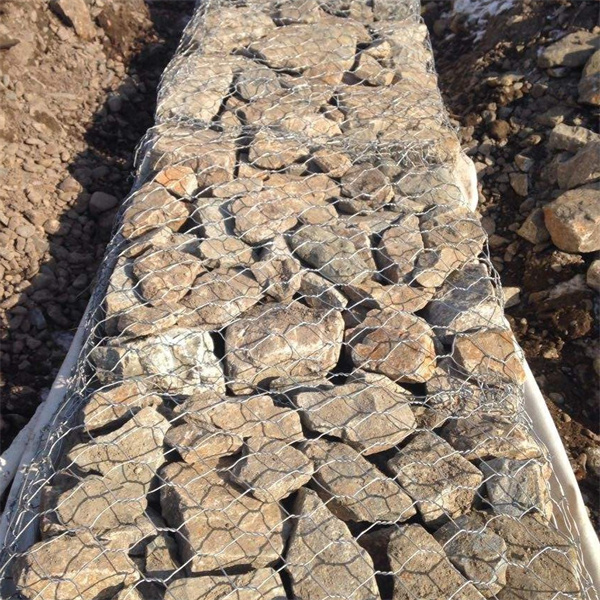Nov . 05, 2024 07:15 Back to list
gabion geotextile manufacturer
The Role of Gabion Geotextiles Enhancing Stability and Sustainability in Engineering
In the world of civil engineering and environmental protection, gabions have become a popular choice for various applications, particularly in erosion control, slope stabilization, and riverbank protection. These structures consist of wire mesh cages filled with rocks or other materials, offering a robust solution for managing earth and water. However, one key component that enhances the effectiveness and durability of gabions is the inclusion of geotextiles.
What are Gabion Geotextiles?
Geotextiles are permeable fabrics used in conjunction with soil and rock structures. When integrated with gabions, they serve multiple essential functions. The primary role of geotextiles is to provide separation between the soil and the fill material within the gabion cages. This separation prevents the mixing of soil and stones, which can lead to instability and reduced effectiveness of the structure over time. By maintaining this separation, geotextiles help to enhance the longevity and performance of gabions.
Benefits of Using Gabion Geotextiles
1. Erosion Control One of the most significant advantages of using geotextiles with gabions is their ability to control erosion effectively. When placed along riverbanks or slopes, the combination of these materials minimizes soil displacement brought on by water or wind, protecting the underlying earth from erosion. The porous nature of geotextiles allows for effective drainage, thus reducing hydrostatic pressure that may otherwise compromise the structural integrity of the gabion.
2. Improved Stability The inclusion of geotextiles aids in maintaining the stability of the surrounding soil. By preventing soil particles from washing away, they help distribute the weight of the gabion load more evenly, thereby reducing the risk of settling or shifting. This stability is crucial, especially in areas subjected to heavy rainfall or flooding.
gabion geotextile manufacturer

3. Cost-Effectiveness Utilizing gabion geotextiles can also result in long-term cost savings. By preventing erosion and enhancing stability, these materials reduce the need for ongoing maintenance and repairs. Moreover, gabions themselves are often less expensive than traditional retaining walls, making the overall project more economically viable.
4. Eco-Friendliness Gabions and geotextiles contribute positively to environmental sustainability. They can be made from recycled materials and are often designed to blend seamlessly into the natural landscape. This aesthetic appeal, combined with their functional benefits, makes them an attractive choice for environmentally conscious engineering projects.
5. Versatility of Applications Gabion geotextiles can be employed in a myriad of applications. From shoreline protection to landscape enhancement, their versatility makes them suitable for various projects. Engineers and architects can utilize them in everything from residential developments to large-scale infrastructure projects.
Choosing the Right Manufacturer
Selecting a reliable gabion geotextile manufacturer is paramount. A quality manufacturer will provide not only high-grade materials but also expert guidance on design and installation. Look for manufacturers with a reputation for sustainability, proven track records in the industry, and a commitment to customer service. Industry certifications and adherence to quality control standards are also indicators of a trustworthy supplier.
Conclusion
Gabion geotextiles are indispensable in modern engineering, offering enhanced performance, durability, and environmental benefits. As the demand for sustainable construction practices increases, the role of gabions, supported by geotextiles, will undoubtedly become more pronounced. Investing in high-quality materials and expert knowledge from reputable manufacturers will ensure the success of any project requiring effective erosion control and soil stabilization. By embracing these innovative solutions, we can build more resilient infrastructures while preserving the natural environment for future generations.
-
The Role of Galvanized Gabion Mesh in Riverbank Protection
NewsJun.26,2025
-
The Role of Gabion Basket Raised Bed in Sustainable Gardening
NewsJun.26,2025
-
Quality Assurance of Wire Mesh Gabion Baskets
NewsJun.26,2025
-
Installation Guide for Welded Gabion Box
NewsJun.26,2025
-
How to Choose the Right Gabion Box
NewsJun.26,2025
-
Different Types of Gabion Wire Mesh
NewsJun.26,2025
-
Why PVC Coated Gabion Mattress Is the Best Solution for Long-Term Erosion Control
NewsMay.23,2025






